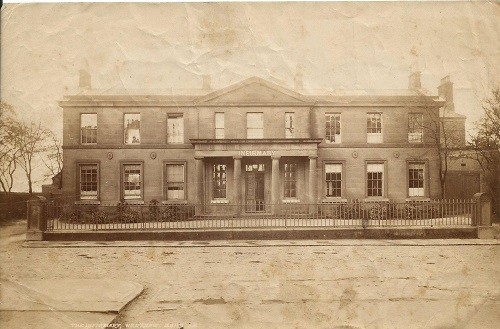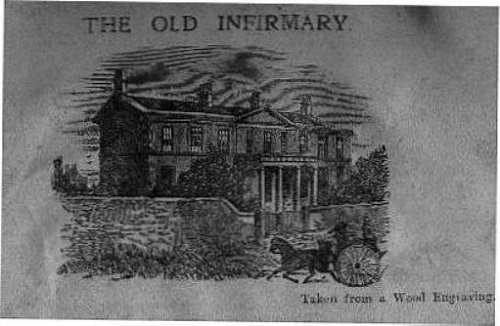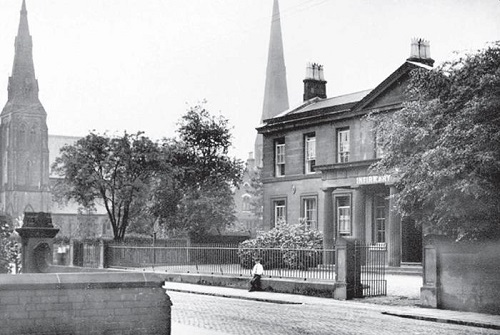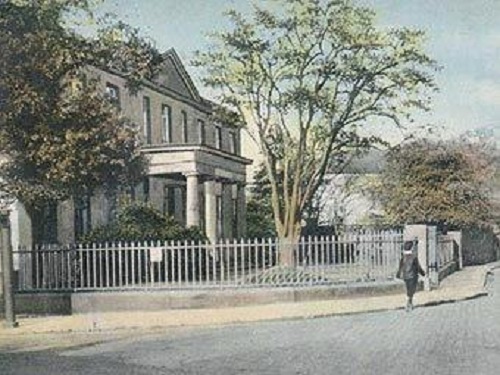The History of Wrexham’s Hospitals

In the third of our Wrexham History features, this week we take a look at Wrexham’s hospitals.
Sir Watkin Williams Wynn, founded Wrexham Infirmary in 1833 through the efforts of Thomas Taylor Griffith, a local Physician who in the preceding year had attended Princess Victoria (later Queen Victoria) when she was taken ill whist visiting Wynnstay. Initially it was called the Dispensary and five years later a new building was erected in Regent Street, known as The Infirmary. This building, with several extensions and improvements, continued to serve as the town’s hospital, until 1918 when it was decided that a new hospital should be built as a memorial to those who had died in the First World War. The Wrexham and East Denbighshire War Memorial Hospital was opened in 1926.
The Maelor General Hospital was formed from the three former local authority institutions becoming vested under the Ministry of Health to provide, together with the War Memorial Hospital, a hospital service for the patients in Wrexham and the peripheral areas of North Wales. The institutions were the Joint Fever Hospital, the Croesnewydd Hospital, which was administrated by the local council, and Plas Maelor. Plas Maelor marks the foundation of the Maelor General Hospital. The buildings were opened in 1934 by the Rt. Hon. David Lloyd George, MP, and were provided by the then Denbighshire County Council as accommodation for 276 men and women, old and infirm.
Plas Maelor, the first building of its kind to be erected by the County Council, was built for the purpose of replacing the workhouse. These new buildings, constructed on an eleven acre site abutting Croesnewydd Road, occupied ground which had previously been a potato field worked by tramps staying the night at the workhouse. Plas Maelor was also situated adjacent to an Isolation Hospital which had been built by the Joint Fever Hospital Committee at the end of the previous century, on a piece of land known as Cac Margaret Halkyn. Shortly after the outbreak of war in 1939, Plas Maelor was taken over by the Emergency Medical Service and served as an emergency military hospital, receiving patients from Dunkirk.
When the hospitals became vested in the Ministry in 1948, the Hospital Management Committee were faced with the problem of developing the service to meet growing needs and a policy of adapting and improving the existing buildings and services was instigated. As a first step, the three hospitals were grouped together and renamed the Maelor General Hospital. Gradually, developments and improvements in the facilities took place. As part of Clwyd Health Authority’s health care strategy, acute services based at the War Memorial Hospital were integrated onto the Maelor campus with the completion of the first phase of the nucleus development opened by the Duchess of Kent in 1986. The hospital was renamed the Wrexham Maelor Hospital.
Thomas Taylor Griffith wasn’t just a Doctor. He was an eminently qualified surgeon and the Infirmary is where he would have carried out much of his specialist work.
Born in Wrexham, the son of Thomas Griffith, who for many years practised as a surgeon in the town. He was educated at the local Grammar School, and after serving an apprenticeship to his father, received his professional training at Guy’s and St Thomas’s Hospitals, where he took Sir Astley Cooper’s first prize for Anatomy and Surgery in 1816. He then went to St Bartholomew’s Hospital and afterwards to Paris.
Settling at Wrexham, he acquired a very large and prosperous practice, and was chiefly instrumental in founding the Wrexham Infirmary in 1832, acting as Hon Surgeon to the Institution until his retirement in 1855, when he was appointed Consulting Surgeon. At the age of 80 he was asked by his neighbours and friends to sit for his portrait, which, painted by Daniel Macnee, afterwards President of the Scottish Academy, was presented to him in 1875, together with a finely illuminated address expressive of the high esteem in which he was held. Sir William Watkin Wynn made the presentation, and the portrait was placed in the boardroom of the Infirmary.
The Ragged Schools in Wrexham owed their origin to Griffith. He was the largest contributor to their support and acted as their Treasurer. He subscribed largely to the Medical Benevolent Fund, the Royal Medical Benevolent College at Epsom, and all the local church societies and charities. He was also the energetic local treasurer of the British and Foreign Bible Society.
He was one of the oldest members of the British Medical Association, and was mainly instrumental in founding the North Wales Branch, of which he was twice President (1849-1850 and 1861-1862). He was a most regular attendant at the annual and other meetings, and took an active part in the discussions of the Association. The members of the branch presented Mrs Griffith with his portrait in 1873.
He did not seek municipal honours, but, when Wrexham was incorporated, presented the Corporation with £200 to form the nucleus of a fund for useful purposes. He was a staunch Conservative and Churchman, a keen antiquarian, a devotee of the natural sciences, being seldom absent from the meetings of the Wrexham Natural Science Society, of which he was President. He possessed a fine library and many old Welsh manuscripts of unusual interest, which students of history frequently consulted. As a practitioner he was an accurate observer, taking great pains to investigate his cases, and even in advanced old age kept himself abreast of the progress of medicine.
Griffith married in 1827 Anne Mary, eldest daughter of Captain Robertson, of Keavil, Fife. She survived him. Their son, the Rev T Llewelyn Griffith, was Rector of Deal. Griffith died at Wrexham on July 6th, 1876, being then regarded as “the Father of the Profession in North Wales”
In 1901, Miss Rose Emily Merritt was appointed as Matron of the Infirmary in Wrexham. She was trained at Guy’s Hospital, London and held positions of Assistant Matron at St Mary’s Hospital, Manchester and Matron at the Falmouth Hospital and Dispensary. There was keen competition for the post as there were no less than 83 applicants.
Written by: Andrea MacDonald. For Wrexham History. More of Wrexham’s history can be found on www.wrexham-history.co.uk
Spotted something? Got a story? Email [email protected]















